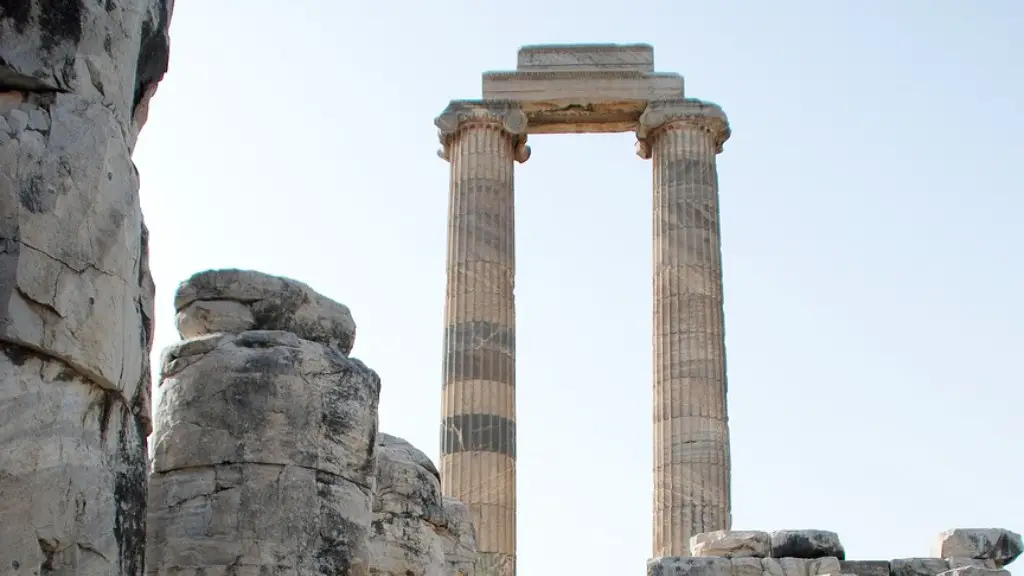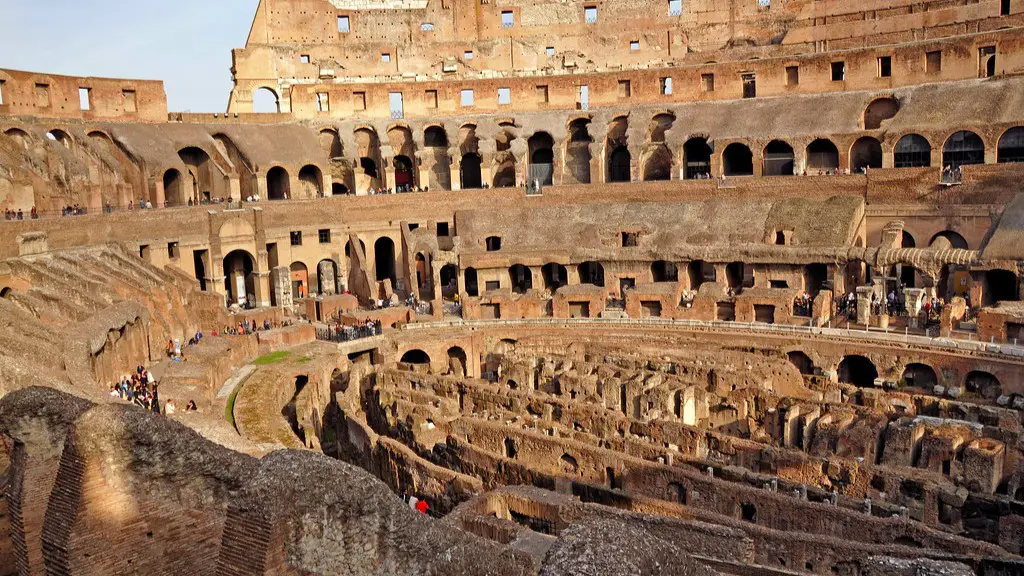Food has a long and fascinating history, and no history is better known than the ancient Roman diet. In the days of the Roman Empire, a wide variety of foods were eaten, and some of these dishes are still enjoyed today, such as fish and grilled meats. But the ancient Roman diet also included many items that today’s eaters might find strange, such as dormice and flamingo tongues. This article will explore the range of food eaten in ancient Rome and discuss the relevant archaeological evidence.
The Roman diet was a varied one that included a range of animal proteins, fruits, vegetables, and grains. Meat, fish, and seafood were an important part of the Roman diet, and these items were usually cooked over open fires. The scarcity of poultry meant that chicken and eggs were usually eaten only by the wealthy, but birds such as geese, ducks, and pigeon were also eaten. Fish and seafood were also popular, and eel was considered a delicacy. A range of fruits and vegetables were eaten, including radishes, leeks, onions, garlic, cucumbers, and olives. Grapes and pomegranates were also enjoyed. Grains were an essential part of the diet, and the most common were wheat, millet, and barley.
Animal proteins were important sources of nourishment in ancient Rome, and a variety of unusual items were consumed. While many species of animal were eaten, one of the most popular forms of meat was pork, and this feature was due to its abundance and availability. Other common meats included lamb and goat, while beef was considered a rare treat. Those of higher social standing could afford to hunt wild boar, while wealthier households enjoyed delicacies like woodland birds and exotic game meats. Besides pork, other popular meats included dormice and flamingo tongues. These unusual meats were considered special-occasion dishes, and were usually served with sauces and spices.
Archaeological evidence suggests that the ancient Romans ate a varied diet that was influenced by both local custom and foreign luxury foods. Numerous archaeological sites have yielded evidence of dietary habits in the form of food remains and kitchen utensils. Analysis of ancient culinary remains has indicated that the Romans were able to make use of a wide variety of ingredients, including fish, game birds, olives, dates, and beans. In addition, archaeological evidence suggests that the Romans ate a wide range of condiments and spices, including pepper, saffron, and mustard. The discovery of numerous kitchen utensils, including pots, knives, spoons, scoopers, and graters, also indicates the variety of foods eaten in ancient Rome.
The ancient Roman diet laid the groundwork for many of the food traditions that are still enjoyed in the Mediterranean today. Dishes such as pasta and pizza owe their origins to the ancient Roman diet and culinary practices. Olives, wines, and grains are all ingredients that are still a staple of the Mediterranean diet. In addition, the preparation techniques and condiments used in ancient Rome have been adopted by modern cooks and chefs. Although the Romans ate a varied and interesting diet, it is important to note that the food items consumed in ancient Rome would no doubt differ from those eaten today.
New Cooking Techniques
The ancient Romans also developed a range of new cooking techniques that allowed for the preparation of meals that were both delicious and nutritious. An example of this is the invention of a type of pottery called “terra sigillata” which were sealed vessels that were used to store and cook foods. Roman cooks were also the first to create a type of soup that was made from onions and oil, called “moretum”. This dish is still prepared today, and is known as “moretum”. The ancient Romans also developed major advances in the area of baking, creating several types of breads such as focaccia, pizza, and foccacia. Different types of dried and fresh fruits, including figs, dates, and olives, were also used in the Roman diet.
Dining Fundamentals
The ancient Romans understood the importance of dining according to an appropriate set of etiquette. Roman society placed a strong emphasis on proper dining etiquette, and this was especially true for the aristocrats and wealthy citizens. Dining etiquette was observed throughout the meal, from the start of the meal with guests providing compliments to the host to the end of the meal with guests expressing appreciation for the food. Guests were also expected to use a specific set of utensils when eating. Forks were not used in the ancient Roman era, and instead, various types of spoons were used.
The ancient Romans understood the importance of connecting food with social practices and entertainment. For example, banquets were a popular form of entertainment and celebration. These banquets were elaborate affairs that often involved great shows and performances, and the food served would often be rich and varied. Guests at such banquets enjoyed a variety of foods, such as fruit, breads, nuts, fish, and meats, as well as a range of wines.
Influence of Gaius Apicius
Gaius Apicius was one of the most important figures in ancient Roman food culture. He is credited with creating a wide range of dishes, including slaves, which were made from a variety of ingredients including honey, spices, nuts, fruits, and meats. Apicius’s cookbooks proved to be influential among the wealthy, and his recipes were often adapted to suit the tastes of wealthy guests. Apicius was also an innovator who is credited with creating dishes such as forcemeat and stuffed dormice.
Due to his cookbooks, Apicius has become synonymous with Roman cuisine, and his recipes have been incorporated into many modern cookbooks. His influence was also seen in the way in which Roman cooks used flavorings to enhance dishes. Apicius was known to use strong flavors, such as garlic, vinegar, and pepper, to add complexity to his dishes. In addition, Apicius is credited with creating a range of seafood dishes, such as oysters in pepper sauce, which were a source of great pleasure to the wealthy.
Romans and Wine
The ancient Romans were also passionate about wine, and it was a key component of the Roman diet. Wine was often served at banquets, and is thought to have been an important source of nutrition. Romans are also credited with the creation of an important winemaking technique, known as “Passum”, which involved the combination of partially fermented grapes and sugar, yielding a sweet and syrupy beverage. Evidence suggests that the Romans enjoyed a wide variety of wines, ranging from sweet and strong to light and acidic.
Wine was also an important part of the social component of Roman life, and there is evidence that drinking was a common activity. Ancient sources suggest that wine was often used in public and private settings, and to celebrate and socialize. Wine was also associated with forms of entertainment, and was often used in conjunction with theatrical performances. This was due to the fact that it was believed to help reduce fatigue during long performances.
Legacy of Ancient Roman Food
The ancient Roman diet has left a lasting legacy on the modern world. Many of the dishes that the ancient Romans enjoyed are still consumed today and remain key components of the Mediterranean diet. Many of the cooking and winemaking techniques that were developed in ancient Rome are also still being used today. The importance of dining etiquette, which was highly valued by the ancient Romans, also continues to be practiced and respected today.
Despite the fact that the ingredients and preparation techniques used in ancient Rome are somewhat alien to modern tastes, there is no denying that the ancient Roman diet has left a lasting impression on the culinary traditions of the Mediterranean. Through the richness and variety of the menu, the ancient Romans have passed on a tradition that still resonates today.
Health Benefits
It is clear that the ancient Roman diet was both varied and nutritious, and there is a growing body of evidence to suggest that the diet was beneficial to overall health. Ancient sources suggest that the Roman diet was characterized by low consumption of red and processed meats, reduced consumption of dairy products, and high consumption of fruit, vegetables, and grains. This balanced, plant-based diet provides the nutrients required for good health, and may help to reduce the risk of some chronic conditions, such as heart disease and diabetes.
Modern researchers have recently begun to analyze the health benefits of an ancient Roman diet, and suggest that it offers numerous health benefits. A number of studies have shown that a low-meat, plant-based diet, with little to no processed foods, is associated with improved health outcomes. Furthermore, recent research has suggested that some components of the ancient Roman diet, such as olive oil and nuts, are associated with reduced rates of cardiovascular disease and cancer.
Conclusion
The ancient Roman diet was a rich, varied, and nutritious one that included both local dishes and foreign luxuries. Although some of the ingredients and preparation techniques used by the Romans would be unfamiliar to modern-day eaters, the legacy of the ancient Roman diet continues to be visible in the Mediterranean today. It is clear that the ancient Roman diet offered numerous health benefits, and modern studies suggest that many of the components of the ancient Roman diet are associated with reduced rates of chronic conditions. Thus, the ancient Roman diet provides a valuable insight into the importance of maintaining a balanced, nutrient-rich diet.




